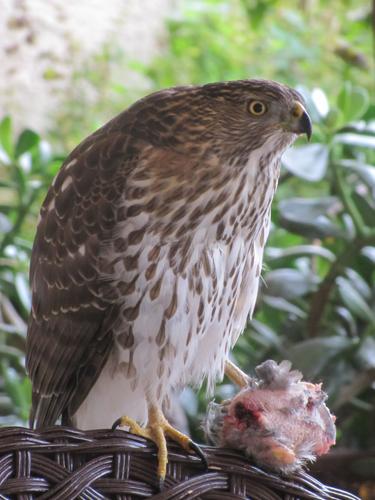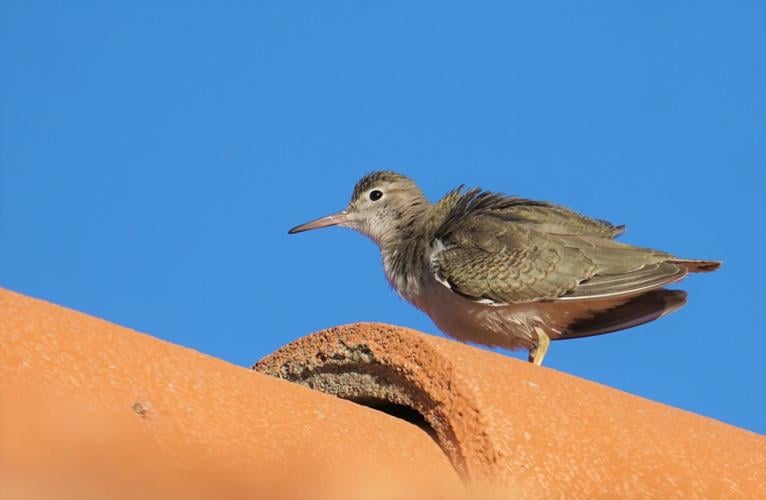If you’re like me, you keep track of birds you’ve seen in or from your yard. Some people write bird sightings on their calendar, some check off birds in a field guide and some keep a formal list in a journal or computer. And some of us use eBird, an online tool that makes it easy to keep track of birds you’ve seen at home, as well as anywhere else in the world.
Launched in 2002 by Cornell University’s Lab of Ornithology and the National Audubon Society, eBird started with the Western Hemisphere only, but expanded to include the entire world in June 2010. Ten-years ago, in 2013 when I first wrote about eBird, there were more than 100,000 users worldwide who had submitted tens of thousands of checklists including over 100 million observations. 2022 was the twentieth anniversary of the database and eBird posters had grown more than eight-fold, to 820,000 birders in every country in the world. They had recorded more than 1.3 billion bird observations, 225 million of them in 2022 alone. These data are recorded for 10,906 species, virtually every known bird and are available free of charge to anyone. In 2014, Cornell introduced Merlin, a free birding app that can be used to identify bird species from either their photographs or their songs and calls, a work-in-progress that now covers much of the world and which grew by nearly three million users in 2022 alone.
Employing user-friendly, intuitive software, eBird is available as a free app on your phone, easy to use and allows observers to quickly enter checklists of sightings, whether for an all-day outing or a casual single-bird backyard observation. eBird tracks your records, allowing you to maintain a ‘life list’, as well as document your sightings by date and location. Similarly, you can examine eBird checklists submitted by others to see which birds have been reported (and when) for any area in the world. For example, you can enter eBird, click on ‘Explore Data’, go to ‘Range and Point Maps’ and enter any bird name for any period of time and any location, such as ‘Pinal County Arizona’. A Google map appears for the requested area, which you can scroll beyond to adjacent areas/counties and small blue and red icons appear wherever submitted checklists include the requested bird. Red markers indicate recent sightings and blue for older checklists. You can zoom closer to get street-level locations, and when you click on an individual marker, you will see checklist detail, including observer’s name and a count of each species reported.
To set up an account, use your Internet browser to find www.ebird.org and then select ‘Register as a new user.’ Enter your first name, last name and email address. Choose a ‘User Name’ of at least 6 characters and create a password of at least 8 characters. Click on ‘Create Account.’ It’s that simple! Generate a simple checklist for your own home address by writing down the number of birds for each species you find in your yard over a short period of time, say 15 minutes. If you see a bird you don’t know, take a photo or record its song with your cell phone and use Merlin to identify it. Once you have an initial list, sign on to eBird and click on ‘Submit Observations.’ Under ‘Where did you bird?’ click on ‘Find it on a Map’, and then zoom to your street address. Once you have established your yard as a site, it will be kept indefinitely, and you can add new sites in a similar fashion. To make posting easier, popular sites such as Catalina State Park have been established as eBird Hot Spots.
You then scroll through an eBird intuitive list of all the bird species you could normally find at this location for this time of the year. As you encounter the names of birds you actually saw, enter the number and continue until finished. Note that the birds are listed in taxonomic order, like birding field guides, rather than alphabetically.
Add to this database by entering new lists over time, and you will build a significant yard list. If you happen to look out the window and see a new bird, you can create a single-bird list (use ‘incidental’ for the type of observation) without taking time to note all the birds you might see over a longer period. Since we began our yard list 20-years ago, it has grown to 110 different species. If you live on the golf course or your yard connects to open space, your list no doubt will be larger. We also maintain a list of birds found in the whole community, east to the Canada del Oro Wash. Both our yard list and the complete SaddleBrooke list can be found on my blog at birdingthebrookeandbeyond.com.
If you have questions or comments about SaddleBrooke’s birds, or to receive emailed information about bird walks led by Bob and Prudy, call (520) 825-9895 or email bobandpru@aol.com. Previously published articles can be found at birdingthebrookeandbeyond.com.










